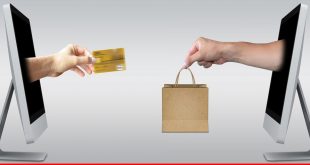The Chicago-School Economists’ guru Milton Friedman and his disciples started to storm the White House in Reagan era. They brought with them the recipe to counter stagflation – a situation when the US economy remained stagnant in spite of rising prices. The recipe for the government was: increase money stock, cut interest rate, and make credit as easy and abundant as possible.
For American people the message was: go shopping, for the fast rising prices are going to make your today’s money less effective tomorrow! The replacement, in 1986, of the sedate and orthodox Paul Volcker with the flamboyant Alan Greenspan as Fed Chairman, brought with it an era of low-cost, easy credit that prompted people to indulge in indiscrete shopping. With the break of Black Monday — on October 19, 1987 – when the New York Stocks crashed sending the index down by 26%, Alan Greenspan grabbed the opportunity to pump as much money into the economy as was possible. The 2007-09 global crisis prompted Alan’s successor Ben Bernanke to flood the world markets with newly-printed tangible dollars; the rest was done by the banking system which created invisible dollars in multiples of the tangible ones.
The last two and a half decades have witnessed the American people turn into headstrong expenders – they have gone overly plastic. In January 2009, an average household was plastically indebted to the extent of $19,000; the figure has come down to $15,706 in March 2015. The overall American household debt stands at $11.85 trillion with the following break-up: credit card debt $891 billion; student education debt $1.19 trillion; mortgage debt $8.17 trillion. The fall in per household plastic debt is more the result of defaults in the wake of global crisis rather than any American vows to austerity.
By their economic upbringing, Americans cannot be expected to be frugal. They know that their unhindered spending creates jobs and augments incomes, which factors in turn encourage more spending. But this type of self-supporting spending system can be the luxury of a uni-polar world power alone that has enough military and economic muscles to assert itself and its economic order.
Spending habits reflect on a nation’s regard for austerity and the need to save for the future; the higher the propensity to spend, the lower the rate of savings. China, France and Germany households spend much less by way of credit card than the American Households do, with the result that these countries have higher savings rates than America’s paltry 4 per cent.
Credit card is a sure, easy and fashionable way of access to credit. It suits more to nations with a higher per capita income. When thoughtlessly introduced to less-developed and poor societies, it has often brought misery to the users with zero financial literacy – Pakistan being one such example. A nation with low per capita GDP and astoundingly disparate incomes, Pakistan saw the emergence of credit cards in early 2000s. The greedy banking sector started to sell the cards to onlookers and bystanders. Those long starving for cash jumped in. The subsequent strings of defaults not only brought misery and humiliation to the uninitiated users but also huge losses to the lenders.
In today’s world, credit card is a status symbol, more so for the nations where rich and poor divide is enormous. The low-income groups would do well to keep their hands off this sleek swipe card. This high-tech, high-profile instrument of debt is meant for those who are concerned only with the goods of choice, not their prices. They use credit cards not only to show off but also to make their life easy and cozy. They are aware of the slickness of this sophisticated instrument of debt, but still love it for its capacity to flaunt their status in a disparate-income society. Slickness refers to the shady way of concealing harsh terms in fine print and to the strings of exorbitant charges attached to the use of this cute-looking piece of plastic.
Slickness starts with the statement of charges, which in Pakistan could be anything like 3.333 per cent per month. For the uninitiated, the catch is in “per month” which adds up to around 40 per cent per annum. Add to this, the issuing fee, the annual renewal fee, penalty charges for delayed payments, and the differential of APR (annual percent rate) and EAR (effective annual rate). Don’t get frightened if the incidence adds up to 60, 70 or even 100 per cent per annum!
Credit card use in Pakistan is not likely to grow in line with its global use. After peaking in free-for-all period, it has stabilized at PKR22.647 billion as of April 2015. The amount represents just 6.3 per cent of the total personal loans, and 0.06 per cent of total loans to the private sector. The slow growth can be attributed to the following factors: high schedule of charges, users’ lack of financial literacy, wiping off of the middle class during the current decade, and common man’s natural propensity to save.
 PAGE Blog Business Weekly Magazine
PAGE Blog Business Weekly Magazine

